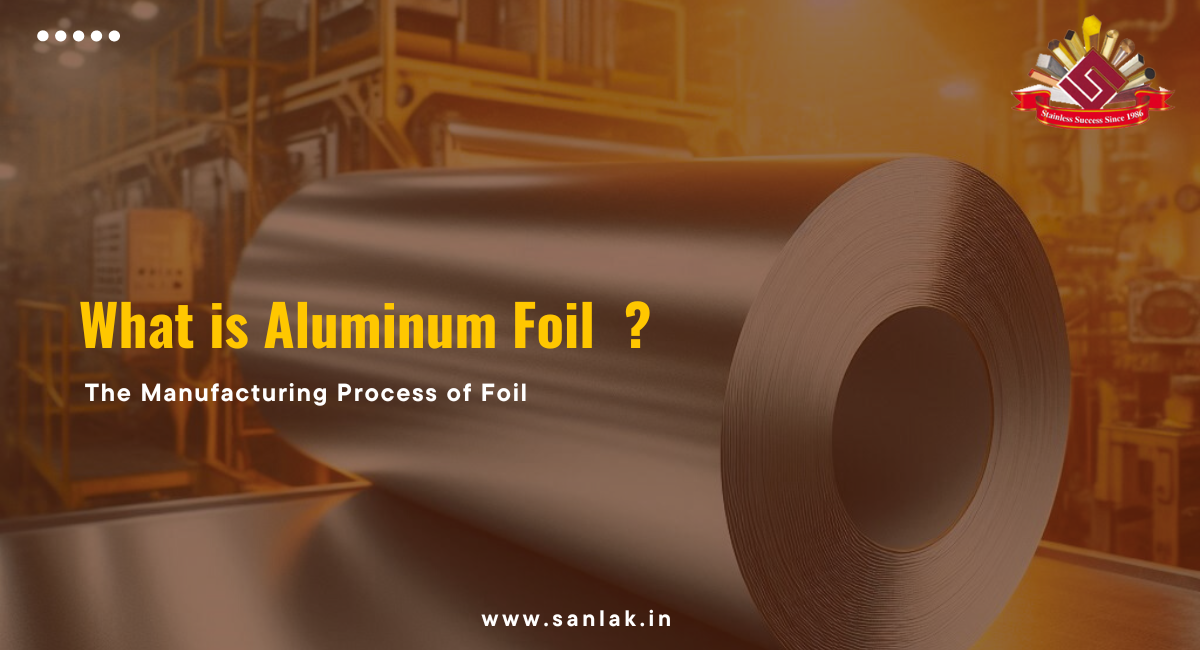
What is Aluminium Foil and How is It Made
What is aluminium foil ?
Aluminum foil is a thin, shiny sheet made from aluminum metal. It’s super handy and used in many ways. In the kitchen, you use it to cover food to keep it fresh, prevent burning, or cook things evenly. It’s also great for lining baking trays and wrapping leftovers. Besides cooking, aluminum foil is used in packaging, insulation, and even in some gadgets. It’s light, flexible, and can be shaped easily to suit different needs.
Aluminum foil is incredibly useful and versatile. Here’s how:
- Cooking and Baking: It keeps food fresh and prevents it from burning by covering dishes. You can also use it to line baking trays, making cleanup easier.
- Storing Food: Wrap leftovers or snacks in aluminum foil to keep them fresh and tasty for longer.
- Insulation: Aluminum foil helps keep heat in or out, so it’s used in things like insulating your home or keeping food warm.
- Packaging: Aluminum foil is great for wrapping items like chocolates or snacks to protect them and keep them fresh.
- Cleaning: Scrunch aluminum foil to scrub pots and pans, or use it to clean your grill.
Its flexibility and ability to handle heat make it a must-have in many situations!
The Manufacturing Process of Aluminum Foil
Step 1: Raw Material Extraction
From Bauxite Ore to Alumina: Aluminum foil starts with bauxite ore, which is refined into alumina (aluminum oxide) through a process called the Bayer Process.
Step 2: Smelting
Transforming Alumina into Aluminum Metal: Alumina is then converted into aluminum metal using the Hall-Héroult process. This involves melting the alumina in an electrolytic cell and applying an electric current to separate the aluminum from the oxygen.
Step 3: Casting
Creating Aluminum Ingots: The molten aluminum is poured into molds to create large blocks called ingots. These ingots are then cooled and solidified.
Step 4: Rolling
Hot and Cold Rolling Techniques: The aluminum ingots are heated and rolled into thin sheets through hot rolling. These sheets are further rolled at room temperature using cold rolling techniques to achieve the desired thickness.
Step 5: Final Processing
Rolling to Foil Thickness and Cutting: The aluminum sheets are rolled down to the very thin thickness needed for aluminum foil. The foil is then cut into rolls or sheets, ready for use in various applications.
This process transforms raw bauxite into the versatile aluminum foil we use every day!
Properties and Benefits of Aluminum Foil
- Lightweight: Aluminum foil is very thin and lightweight, making it easy to handle and store.
- Flexible: It can be easily bent and shaped, which is perfect for wrapping food and covering dishes.
- Heat-Resistant: Aluminum foil can withstand high temperatures, making it ideal for cooking, baking, and grilling without burning.
- Moisture and Light Barrier: It keeps moisture and light out, which helps preserve the freshness of food and protects items from spoiling.
- Excellent Heat Conductor: Aluminum foil efficiently conducts heat, making it perfect for cooking and keeping food warm.
- Recyclable: Aluminum foil can be recycled, which is good for the environment and helps reduce waste.
These properties make aluminum foil an incredibly versatile and practical material for cooking, storing, and many other applications!
Applications of Aluminum Foil
- Cooking and Baking: Aluminum foil is a kitchen essential. It helps keep food fresh, prevents burning, and ensures even cooking. Use it to line baking trays, wrap food, or cover dishes.
- Food Storage: Wrap leftovers, sandwiches, or snacks in aluminum foil to keep them fresh and tasty. It’s great for preserving the flavor and texture of your food.
- Insulation: Aluminum foil is used in home insulation to keep heat in during winter and out during summer. It also helps in keeping food warm or cold in coolers.
- Packaging: Aluminum foil is perfect for wrapping and protecting items like chocolates, candies, and other snacks, keeping them fresh and safe from damage.
- Cleaning: Scrunch aluminum foil into a ball and use it to scrub pots, pans, and grills. It’s a handy tool for tough cleaning jobs.
- Crafts and Decorations: Aluminum foil can be used in arts and crafts projects, from creating sculptures to adding a shiny touch to decorations.
Aluminum foil’s versatility makes it an indispensable part of everyday life, from your kitchen to your home insulation and beyond!
Future Trends and Innovations in Aluminum Foil
The future of aluminum foil is promising with several key trends. The industry is moving towards more eco-friendly practices, including better recycling and greener production methods. Innovations may lead to improved protective properties, smart packaging with sensors for monitoring food, and biodegradable options to reduce waste. Advances could also enhance durability and flexibility, expanding its applications in electronics and healthcare. These developments will make aluminum foil more efficient, sustainable, and versatile.
Conclusion
Aluminum foil is getting even better with exciting new developments. It’s becoming more eco-friendly, with better recycling and new biodegradable options. Innovations like smart packaging and stronger, more flexible foils are making it more useful in various fields. Companies like Sanlak are at the forefront of these changes, helping to shape a more sustainable future.
If you found this article interesting, share it with your friends and family to spread the word about how aluminum foil is evolving!
